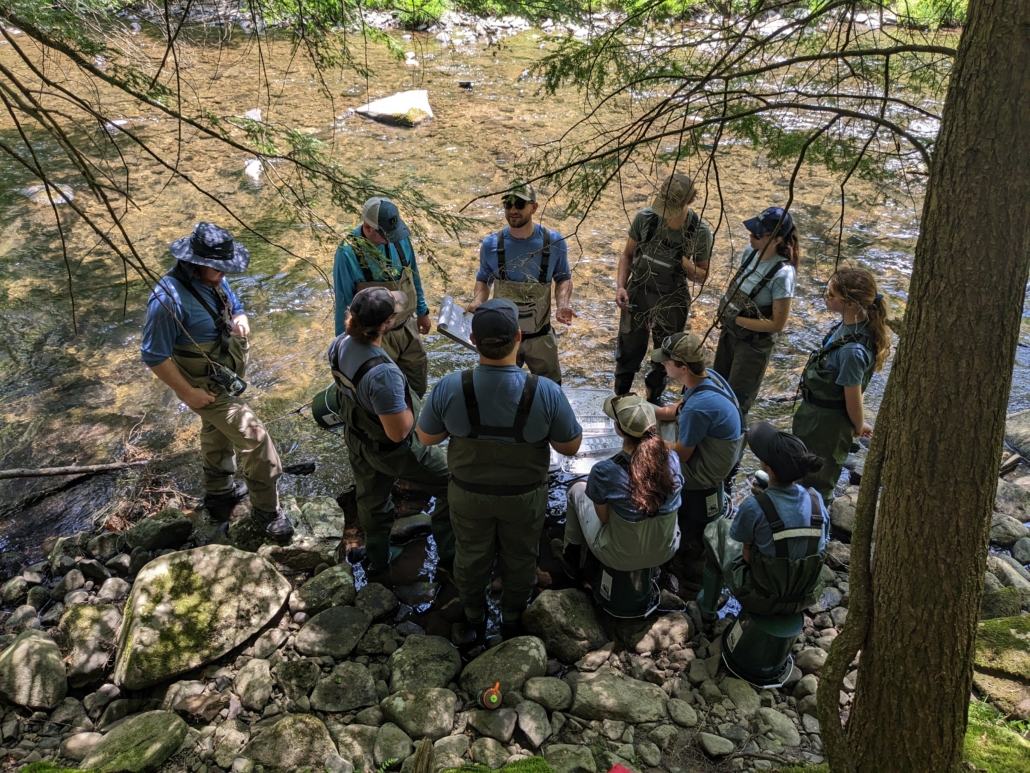
By: Edward Kim
Freshwater is one of the most, if not the most, precious natural resources in the world. Life would not be possible without healthy freshwater and the ecosystems it supports. Unfortunately, bodies of freshwater are rapidly disappearing or being contaminated due to harmful human activities coupled with climate change–but there’s hope thanks to Service and Conservation Corps.
Upper Delaware River Conservation Corps (UDRCC) is stepping up to help protect our country’s precious freshwater sources through outdoor national service projects. They’re currently leading an aquatic macroinvertebrate identification project in the Willowemoc Watershed in Sullivan County, NY to gain key insight on water quality levels from streams connected to the Delaware River.
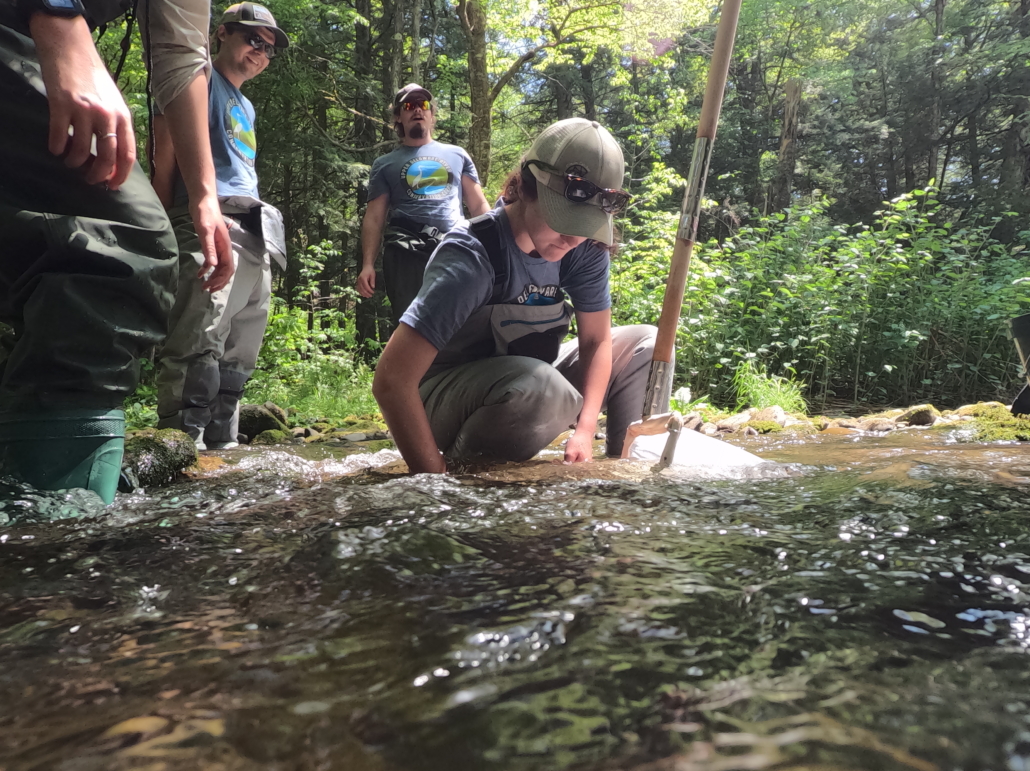
This summer, a crew of UDRCC Corpsmembers set out to streams to evaluate its overall health through biomonitoring. In ecological terms, biomonitoring is a scientific method that studies organisms to determine the health and conditions of an ecosystem.
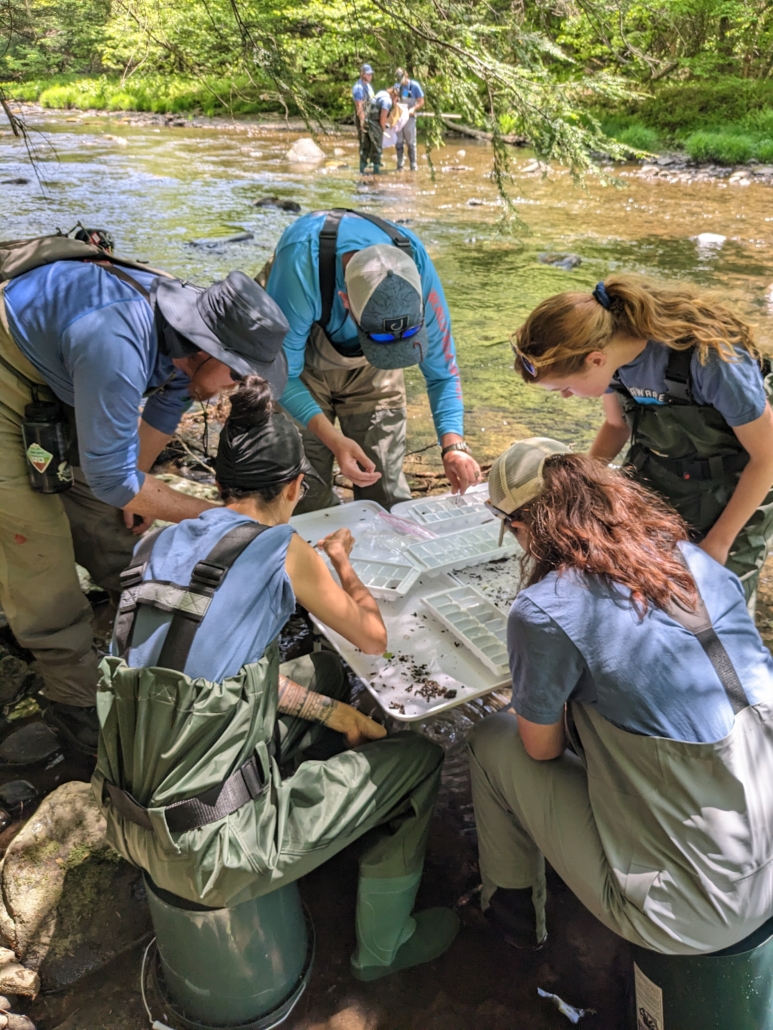
Biomonitoring is a scientific method that studies organisms to determine the health and conditions of an ecosystem
The Willowemoc Watershed, like many other freshwater ecosystems, teems with essential plants and wildlife. Here you’ll find numerous tree species and freshwater streams that are home to small and large mammals; cold-blooded reptiles and amphibians; residential and migratory birds; multiple fish species; and hundreds of aquatic macroinvertebrates.
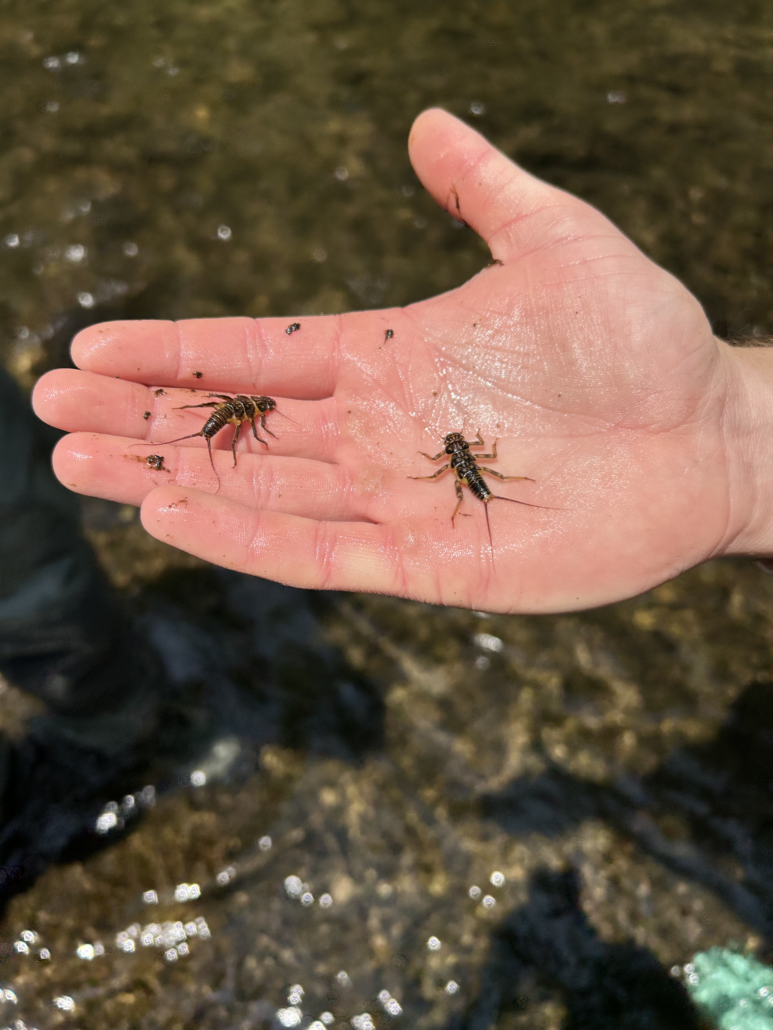
Macroinvertebrates are organisms that can be seen with the naked eye and do not have a backbone. Examples of freshwater aquatic macroinvertebrates include insects such as mayflies, caddisflies, and stoneflies, as well as the larva of certain flying insects like mosquitos and dragonflies. Crayfish, worms, snails, and clams are other common aquatic macroinvertebrates.
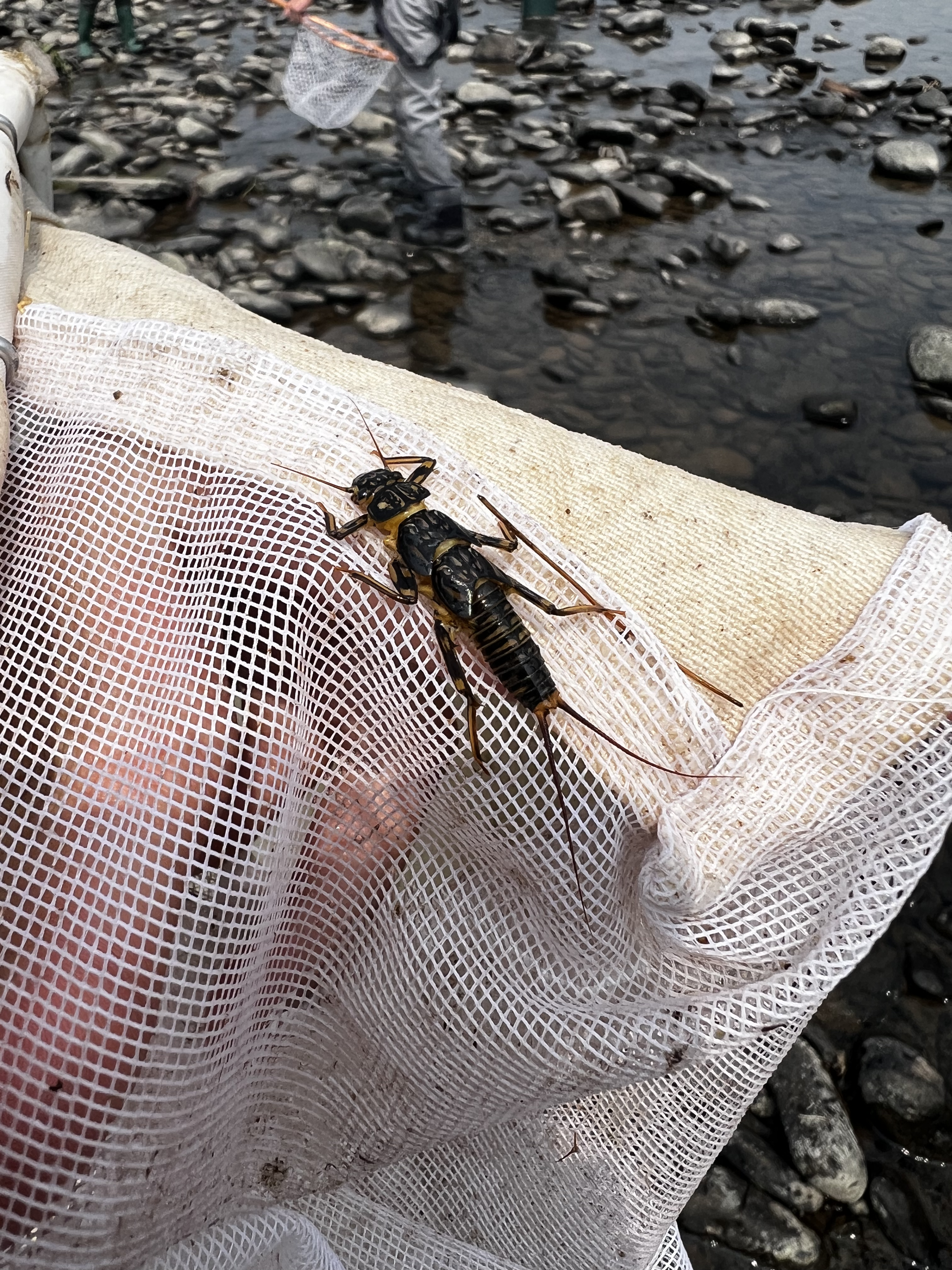
Despite being spineless, aquatic insects support the base of the food chain in freshwater ecosystems. They’re critical food sources for larger organisms, notably salmon and trout. Did you know that fly fishing, a popular angling technique, gets its name based on the lures resembling the enticing insects fish like to eat?
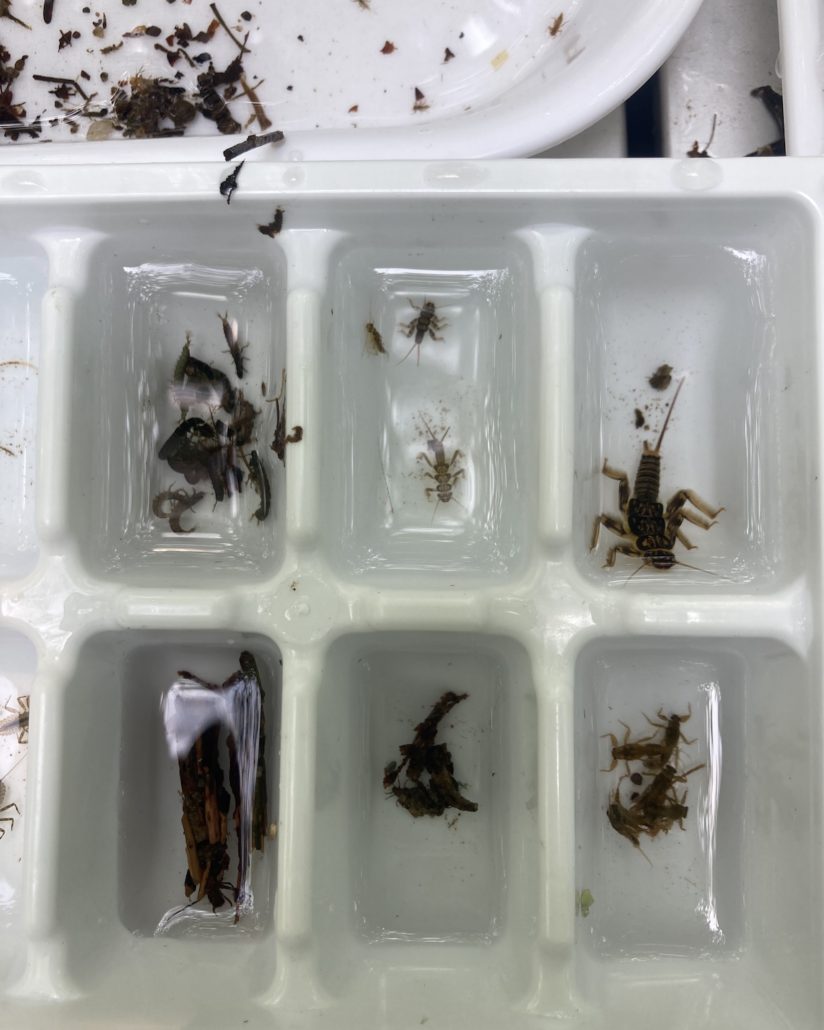
Aquatic macroinvertebrates serve as reliable indicators of water quality for UDRCC Corpsmembers to survey. In addition to being abundant and diverse, they’re also relatively easy to collect with many macroinvertebrates staying in a small area most of their lives.
More importantly, many macroinvertebrates are sensitive to changes in stream conditions–including water temperature, pollution amount, dissolved oxygen levels, types of sediment, and more–but their tolerance levels to changing conditions vary based on the species. This means determining the number and diversity of macroinvertebrates in a stream can reveal useful information about the water’s quality.
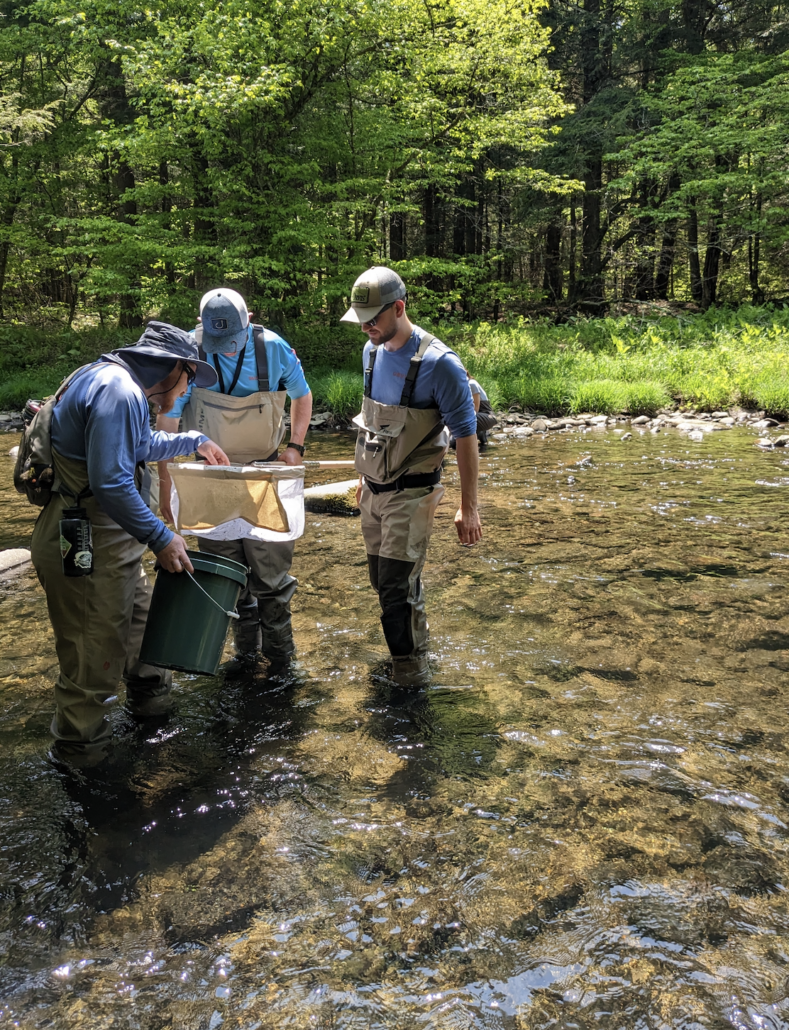
Aquatic macroinvertebrates serve as reliable indicators of water quality for UDRCC Corpsmembers to survey
So far, UDRCC Corpsmembers have sampled over 600 aquatic macroinvertebrates in several segments of the Willowemoc Watershed. The crew locates macroinvertebrates through a method called kick net sampling, which involves wading in the steam and using their feet, wooden sticks, and the current to dislodge any macroinvertebrates hidden under rocks, wood, and leaves. The critters are then swept into fine mesh kick nets resembling butterfly nets before being identified and recorded.

According to Friends of the Upper Delaware River’s Policy Director Molly Oliver, the crew, “found a species of caddisfly (rhyacophilidae) and many mayfly species that are considered key indicators of a healthy stream, including an armored baetis (baetiscidae). A giant stonefly (pteronarcyidae) was a fun find. They can get to be the size of a baby carrot or your big toe.”
UDRCC Corpsmembers have sampled over 600 aquatic macroinvertebrates in several segments of the Willowemoc Watershed
While macroinvertebrates are collected and counted, the UDRCC crew categorizes them based on their order, family, genus, and species. This information can reveal much about the stream’s health. For example, if pollution sensitive macroinvertebrates–like caddisflies and stoneflies–are identified, then the stream is determined non-impacted or healthy since sensitive species can tolerate it.
On the other hand, if a previously abundant stream shows a drop in the number of identified species or suddenly begins to offer only tolerant species, then the stream would be considered impacted or unhealthy.
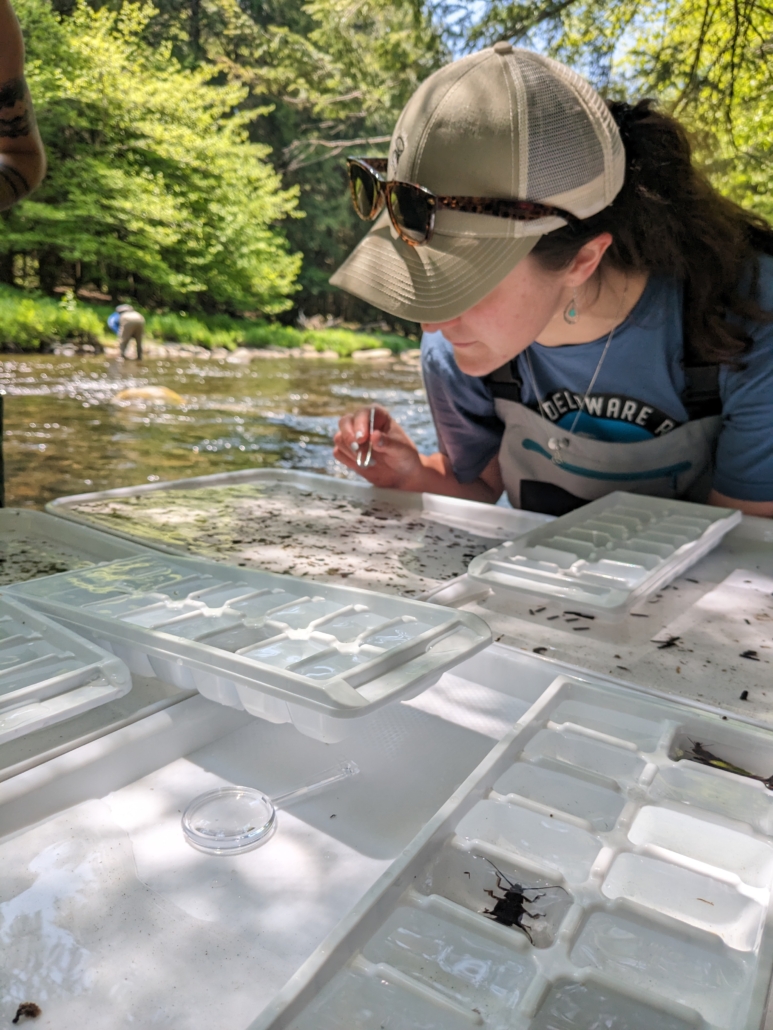
“One of the most rewarding things is seeing the crew members grow throughout the season. A moment inevitably comes when everything just clicks. They see a macroinvertebrate and can identify it without having to look at a key, or they do an assessment and can complete it correctly without needing help. Those moments make this work so gratifying,” shared Oliver.
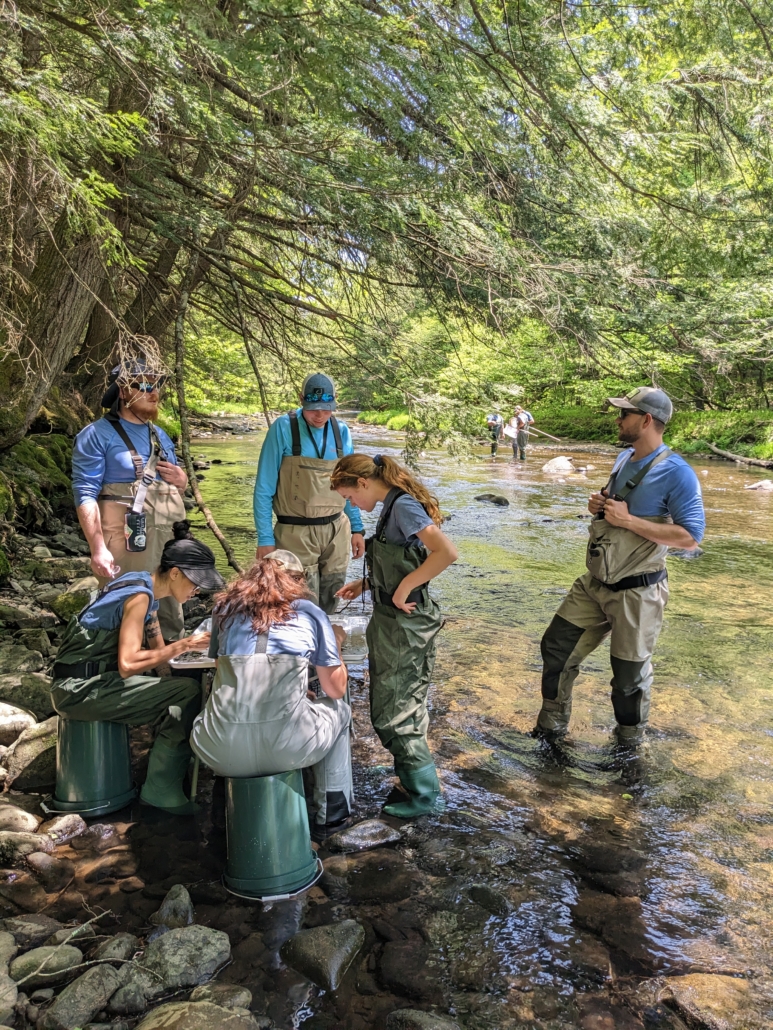
Each participating Corpsmember has worked approximately 80 hours on this project, and that number is expected to double. This currently ongoing project provides insightful data on water quality that will aid community members in properly understanding and managing waterways connected to the Delaware River. Thanks to macroinvertebrates and the information collected by UDRCC Corpsmembers, unhealthy stream sections are being identified, and future initiatives to improve water quality and stream conditions will hopefully be more effectively decided upon and implemented as a result.
As part of the Delaware River Climate Corps (DRCC) initiative, this project was made possible after The Corps Network received roughly $3.7 million in grant funding from the William Penn Foundation in 2021 and 2023. UDRCC is one of many climate and conservation-focused Corps programs part of the DRCC initiative. A regional model for a national Civilian Climate Corps, this initiative seeks to improve climate resiliency within the Delaware River Watershed by training and employing young adults in environmental careers.
